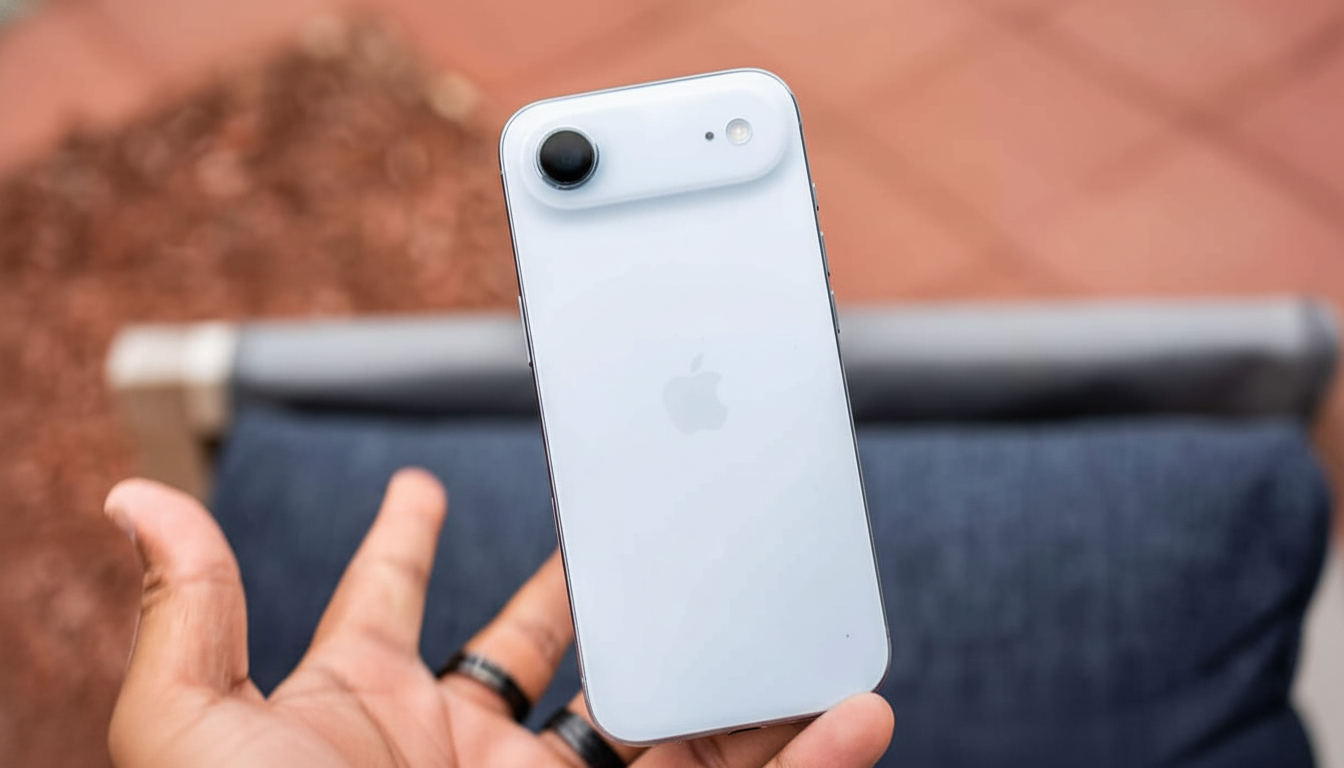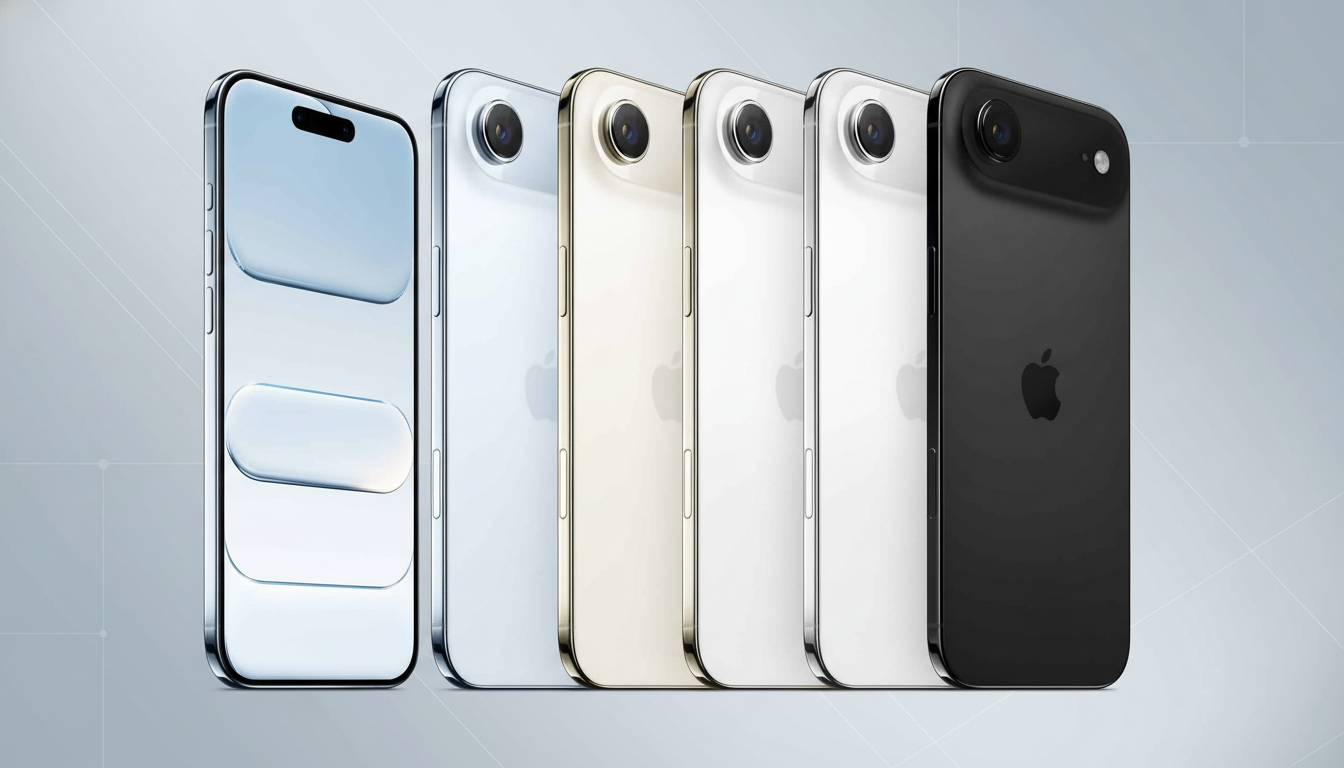Apple has also dropped a new iPhone Air, at a $999 price level that revs the thinness and lightness pedal a bit without going all the way to full “Pro” pricing. Placed as the new large-screen model in the lineup, it replaces the Plus model and puts Apple’s playbook back where it belongs: design elegance and portability.
The iPhone Air combines a 5.6 mm titanium body with a 6.6-inch screen, a speedy 120Hz ProMotion display and the same A19 Pro chip found in Apple’s high-end phones. It’s also eSIM-only, which leaves that space freed up inside and accentuates Apple’s move towards a cleaner exterior.

Ultra-thin for more color, less design
The iPhone Air is just 5.6mm thick, the thinnest iPhone from Apple to date and just edging out some competing flagship models. (For reference, Samsung’s Galaxy S25 Edge is 5.8 mm.) The Air’s titanium frame contributes to the stiffness while keeping mass in check — a mix that Apple has been getting better and better at across its higher-end hardware.
The 6.6-inch panel is a sizable upgrade for those looking for a big canvas without the heft of a Pro Max. It has 120Hz ProMotion, so scrolling and touch interactions feel instantaneous, which a lot of users now consider to be table stakes for the high end of the smartphone market.
Performance and software intelligence
Like the A19 Pro, the iPhone Air runs at Apple’s uppermost price/performance tier. That translates to quicker neural processing for on-device AI features, slicker gaming at high frame rates, and headroom for video capture and editing.
On the software front, iOS 26 brings with it a feature called Adaptive Power Mode, which relies on Apple Intelligence to adjust performance and background activity throughout the day. Count on small changes to screen refresh rate and brightness, and app behavior, to eke out more runtime without shoehorning users into a single, gross “Low Power” switch.
Battery and accessories for the thin era
Thin phones invite battery anxiety. Apple’s answer comes in two parts: an “all-day” endurance claim and a new slim MagSafe battery that’s been made especially for the Air. With the clip-on pack, Apple claims users will be able to achieve up to 40 hours of video playback, probably music to the ears of commuters and frequent fliers.
Apple is also selling an ultra-thin see-through case (1 mm-ish), in a frost or shadow color; a lightweight bumper in four matching colors; and a cross‑body strap. The accessories recognize a truth about extreme thinness: Protection and additional power are secondary layers, not afterthoughts.

Camera and connectivity choices
The iPhone Air introduces a 48‑megapixel fused camera system that uses computational photography to simulate a range of focal lengths without a multi-lens bump. “[48 billion] times per second — the theoretical maximum rate of GFX100 RAW data it produces — translates to responsiveness that is blindingly fast for a camera that can resist four 100kph Typhoons lashing it and doesn’t require a Russ Space Suit to operate.” Users can anticipate super crisp 1x and 2x shots, much-reduced low‑light legs and a surge in detail whether in 4K video or huge huge RGB RAW stills, thanks to pixel binning and the introduction of amazing new image pipelines,” adds the company, noting that all of the data is processed to 16-bit color in real-time with no limitations.
An eSIM-only solution eliminates the need for a physical SIM tray, which would improve the level of ingress protection and make it a little harder for thieves to swap in their own SIM, presumably. It’s part of an industry-wide shift; GSMA Intelligence estimates that eSIM is well-supported in major carriers in more than 100 markets, and it’s picking up momentum as more devices ship without physical slots.
A strategic shift in Apple’s lineup
The Air takes the place of the Plus, a transition perhaps poked at by feeble demand for 2019’s big, non‑Pro beast of a development. Display Supply Chain Consultants has also pointed out a weakness in that segment, and suggests that buyers either went for base models on pricing, or stretched to Pro for premium features. The Air recasts that middle ground: Large screen, premium materials, less bulk.
This is a familiar strategy. Thin-and-light wasn’t the luxury — it was simply the default, thanks to the MacBook Air, which became Apple’s best‑selling Mac. Analysts have long been quick to point out the Air’s halo effect on the rest of the Mac lineup; the iPhone Air is meant to serve a similar function for phones, establishing the template for future designs while pushing average selling prices higher.
There’s also a strategic backdrop. “Its future consists of a thinner iPhone,” according to Bloomberg’s Mark Gurman. In the meantime, IDC says it expects foldable shipments to grow “considerably” over the next few years. A slim building today could pave the way for more ambitious designs tomorrow and it gives Apple a unique counterpoint to foldables from Samsung and Google as it fights to defend share in competitive markets like China.
Price, colors and who it’s for
Starting at $999, the iPhone Air comes in Space Black and Cloud White coats, as well as light gold and sky blue. Available in the same colors and materials as the 13 Pro, and sticking to the same configurations as last year’s Mini (128GB for $699 and 256GB for $799), it’s aimed at users who want a large premium iPhone without the bulk or price of the Pro Max. With a Pro‑grade display and processor, a single advanced rear camera and eSIM‑only connectivity, it (presumably) packs the same fantastic iPhone features into the smallest body possible.
If Apple’s bet pays off, “Air” will be shorthand for the default iPhone experience the way it was on the Mac — where thin and light are not compromises, but the whole point..

